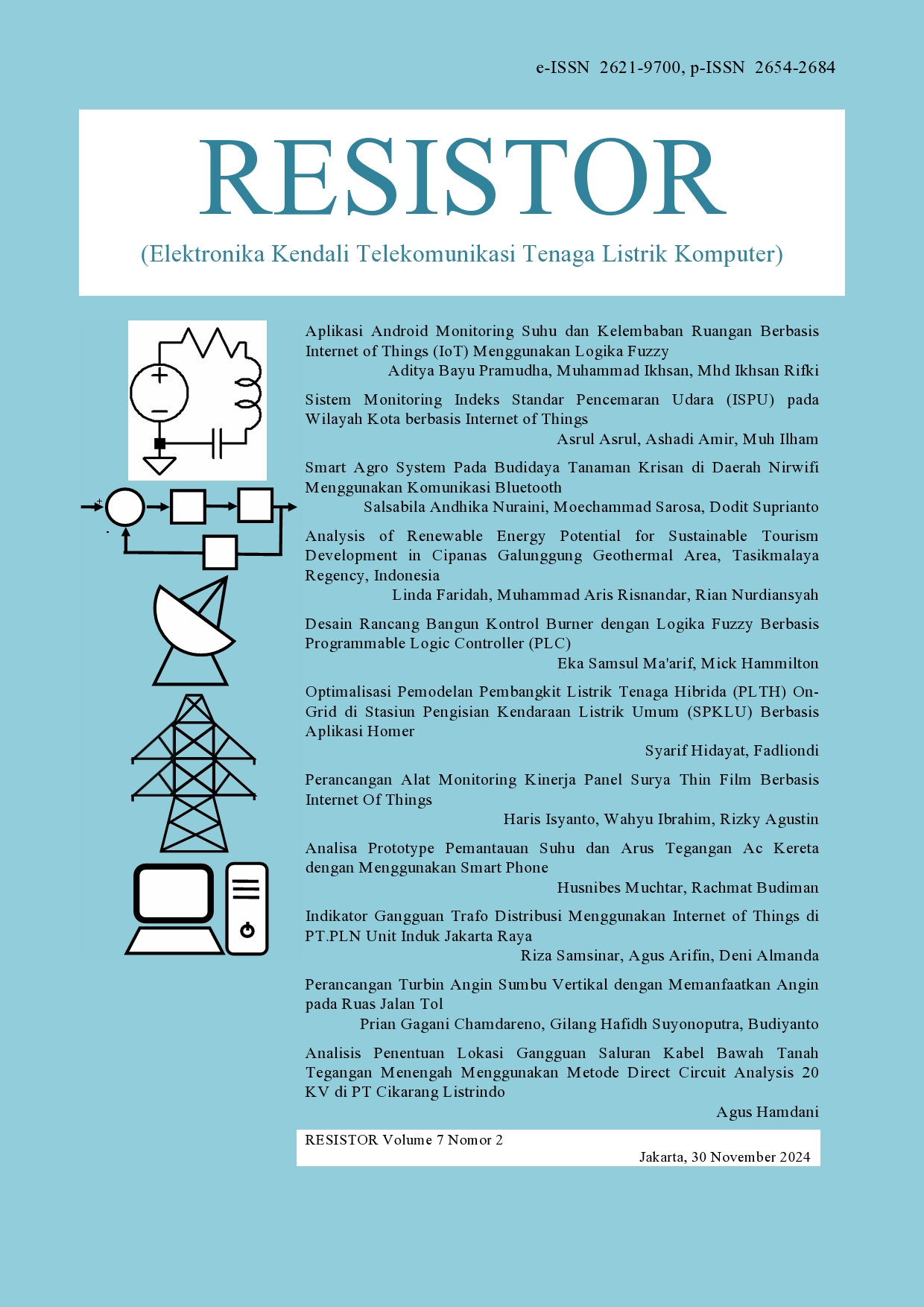Sistem Monitoring Indeks Standar Pencemaran Udara (ISPU) pada Wilayah Kota berbasis Internet of Things
DOI:
https://doi.org/10.24853/resistor.7.2.93-100Abstrak
The increase in the number of motorized vehicles in urban areas poses problems with air quality. Changes in air quality caused by harmful gases cannot be observed directly. In this study, an Internet of Things (IoT)-based air quality monitoring system was designed. The designed system consists of a sensor device that can measure CO, O3 and PM10 parameters integrated with a Microcontroller device. Prototype testing was carried out in Parepare City to observe the values of air quality parameters and ISPU through IoT-based applications for one week. The test results show that the highest air pollution level on the Pinrang-Parepare Axis Road occurs on Wednesdays, Thursdays and Sundays with the highest average ISPU being 500 and on Jalan Jendral Ahmad Yani the highest air pollution levels occur on Mondays, Saturdays and Sundays with the highest average ISPU being 300. The increase in ISPU values is affected by air temperature and humidity. The highest concentration occurs when the air temperature is low and the air humidity is high.Referensi
A. Amnur & B. Wicaksono, “Responsibilitas Pemerintah Kabuapten Siak terhadap Pencemaran Udara di Kecamatan Tualang Tahun 2014-2015 (Desa Pinang Sebatang Timur),” Skripsi, Universitas Riau, 2017.
F. S. Rezlya, F. S., “Analisis pH dan Konduktivitas Air Hujan Terhadap Kualitas Udara Selama 2019-2021 Di Wilayah Bandar Lampung,” Skripsi, UIN Raden Intan Lampung, 2022.
M. N. Baehaqi, N. R. Yulia & C. Y. Pratama, “Rancang Bangun Sistem Pemantau Kualitas Udara Menggunakan Sensor GP2Y1010AU0F dan MQ-7 Berbasis Web di Pelabuhan Tanjung Priok,” Universitas Negeri Jakarta, 2017.
E. Apriawati and A. A. Kiswandono, “Kajian Indeks Standar Polusi Udara (ISPU) Nitrogen Dioksida (NO2) di Tiga Lokasi Kota Bandar Lampung,” Analit: Analytical and Environmental Chemistry. vol. 2, no. 01, pp. 42–51, 2017.
A. Kurniawan, “Pengukuran Parameter Kualitas Udara (Co, No2, So2, O3 Dan Pm10) Di Bukit Kototabang Berbasis ISPU,” J. Teknosains. vol. 7, no. 1, p. 1, 2018.
T. Kwanda, “Pembangunan Permukiman yang Berkelanjutan Untuk Mengurangi Polusi Udara,” DIMENSI (Journal of Architecture and Built Environment). vol. 31, no. 1, pp. 20–27, 2003.
A. Laksono, “Identifikasi Jenis Lichen Sebagai Bioindikator Kualitas Udara di Kampus Institut Agama Islam Negeri Raden Intan Lampung,” Skripsi, IAIN Raden Intan Lampung, 2017
Y. Efendi, “Internet Of Things (Iot) Sistem Pengendalian Lampu Menggunakan Raspberry Pi Berbasis Mobile,” Jurnal Ilmiah Ilmu Komputer Fakultas Ilmu Komputer Universitas Al Asyariah Mandar, vol. 4, no. 2, pp. 21–27, 2018.



